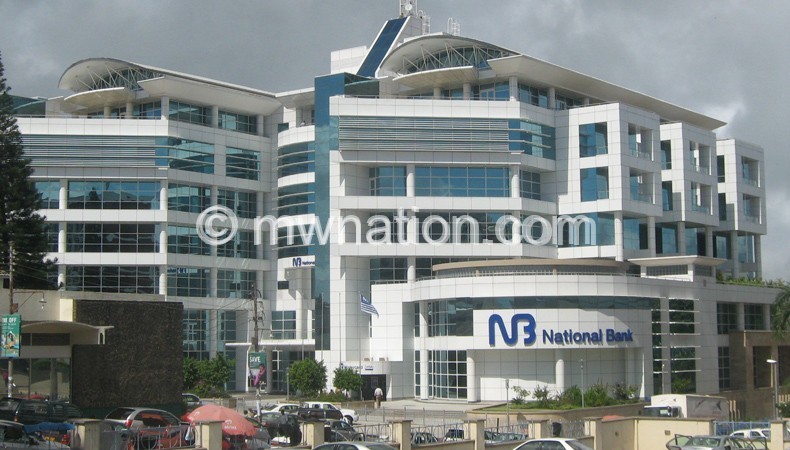Is Malawi heading towards a concentrated banking sector?
Reserve Bank of Malawi (RBM) Financial Stability Report of June 2014, which covers the period of six months between October 1 2013 and March 31 2014, states that the capital positions for the banking system in Malawi over the review period are evidence of a sound banking sector.
The report notes that the tier 1 capital ratio of the banking industry declined slightly from 16.2 percent (Basel I) recorded in September 2013 to 14.7 percent (Basel II) recorded in March 2014. Nonetheless, the March 2014 ratio was still above the new minimum tier 1 capital ratio of 10 percent.

Equally, the ratio of total capital against risk weighted assets decreased from 19 percent (Basel I) recorded in September 2013 to 18.3 percent (Basel II) recorded in March 2014. Nonetheless, the March 2014 ratio was still above the new minimum total capital ratio of 15 percent.
The report notes that the decline in the capital ratios is largely on account of the change in the capital adequacy measurement as a result of the Basel II implementation in Malawi.
The decline in capital ratios by about 1.5 percent for the tier 1 capital and about 0.7 percent for the total capital after the Basel II implementation is not unpredicted. This is necessarily because banks have moved from measuring risk based on the credit risk method only [Basel I] to measuring risk based on credit risk methods, market risk methods and operational risk methods [Basel II].
As a result of the RBM’s new guidelines requiring banks to adopt the Standardised Approach for measuring credit risk, adopt the Standardised Approach for measuring market risk and adopt the Basic Indicator Approach for measuring operational risk, there have been obviously changes in capital requirements. Notably, the Basic Indicator Approach has required a large increase in capital requirements which has more than offset the capital untied by the adoption of the Standardised Approach under the credit risk method and under the market risk method respectively.
This immediate impact on the local banks’ capital positions resulting from the operation of the RBM’s new Guidelines (under Basel II) has been felt by almost all the banks in Malawi except National Bank of Malawi (NBM).
The impact has not been felt by NBM as it was already adequately capitalised prior to the inception steps towards Basel II implementation.
Apart from NBM, which did not require any recapitalisation (and apart from the remaining two banks which are yet to comply with the new minimum capital requirements by attracting strategic investors), the rest of the local banks have had to recapitalise, either through new equity funding or retained earnings, in order to meet the new minimum capital requirements.
Challenges in using external credit rating agencies
As already stated, the RBM’s credit risk guidelines (Basel II) require banks to use the standardised approach to measure credit risk.
The standardised approach is required to be based on ratings assigned by eligible external credit assessment institutions (ECAIs) or export credit agencies (ECAs) to determine risk weights for a bank’s exposures to counterparties in order to set regulatory capital for credit risk.
One major challenge in using ECAI and ECAs is that these credit rating institutions and agencies are yet to be institutionalised in Malawi.
The credit risk guidelines set out six criteria for the agencies to comply with in order to be institutionalised and operational in Malawi. To satisfy the six criteria, an ECAI or ECA must be objective, independent, transparent, open, resourceful and credible.
Even when the ECAIs and ECAs become institutionalised in Malawi, there will be other challenges to be faced. One of such challenges which will be encountered by ECAIs and ECAs will be the non-availability or limited availability of reliable information at micro-level to cater for credible assessment of credit risk.
The other challenge to be faced will be to do with the level of penetration into the market to be able to gather required information. Considering the Malawi financial market remains underdeveloped and less structured, ECAIs and ECAs will face serious hurdles in deepening their penetration into the market to gather accurate and complete information. This particular challenge is likely to lead to an another challenge, i.e. the risk of adverse selection arising from ECAIs or ECAs failing to assess risk correctly because of non-availability or limited availability of accurate and complete information.
RBM’s Financial Stability Report points out that credit risk in the banking system remained high with the ratio of non-performing loans (NPL) rising from 13.6 percent in September 2013to 15.7 percent in March 2014. By March 2014, private sector credit comprised 47.6 percent held by the corporate (commercial and industrial) sector, 29.2 percent held by individuals, 15.6 percent held by forex loans, 5.8 percent held by mortgages and 1.8 percent held by the agricultural sector.
Considering that credit extended to individuals was high ranking second from credit to the corporate sector, it is no wonder that some banks have reacted to the rising NPLs by suspending extending credit to individuals and a majority of small and medium enterprises (SMEs).
Just as was the experience in the Malawi’s banking sector under the RBM old regulatory regime (Basel I) which was regulated by, amongst others the Capital Adequacy Requirements (Minimum Capital Ratios for Banks) Directive, the banking sector will continue under RBM’s new regulatory regime (Basel II) to experience a preference to holding more risk-free government securities to the detriment of the private sector as local banks will continue to lend less to the private sector, particularly to individuals and SMEs.
Banks will also find it more attractive to holding risk-free government securities as these enable banks to nonetheless be able to easily meet the capital adequacy requirements whilst exploring opportunities for reaping gains from good interests charged on the loans. – ELTON JANGALE





